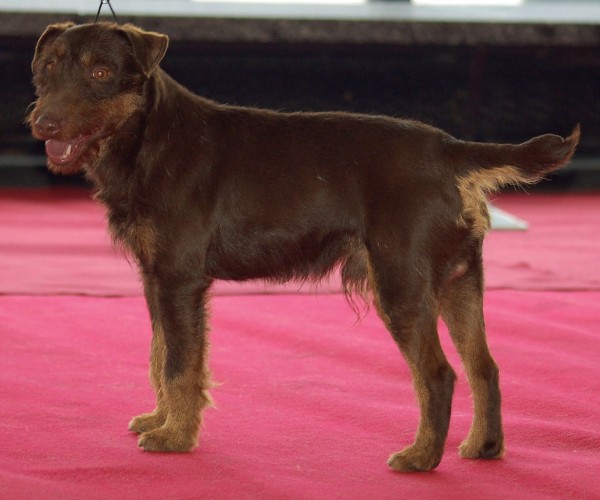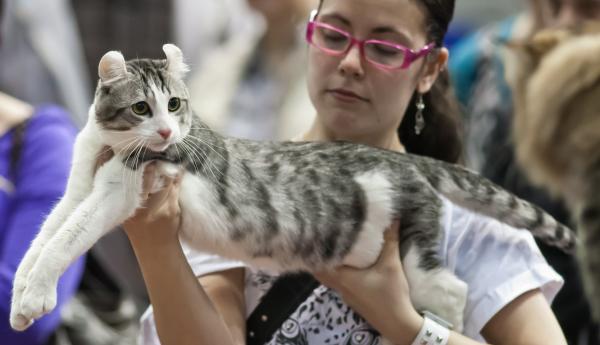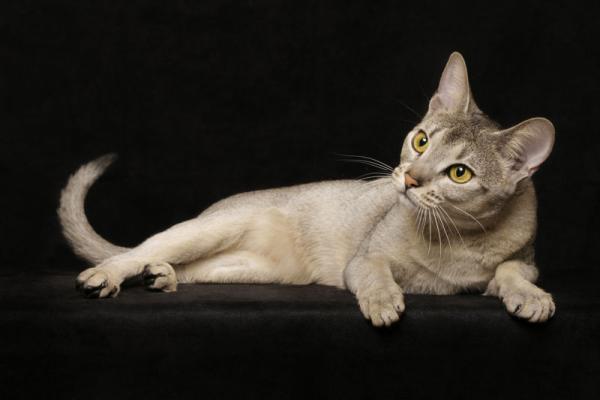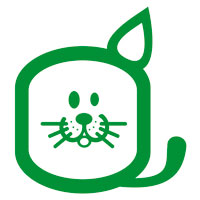Los Artículos sobre Mascotas (Perros o Gatos) de PETSmania
Ir a indice de Artículos
Terrier Ratonero Americano
Estandar de la Raza Terrier Ratonero Americano
Por :
(Estados Unidos)
Seccion:
Official Standard of the Rat Terrier
(Terrier Ratonero Americano)
General Appearance:
The Rat Terrier was originally bred for ratting and farm work. A multipurpose companion dog that is capable of hunting rodents and vermin above and below ground, and to course small game. He is a sturdy, compact, small-to-medium sized parti-colored dog giving the appearance of elegance and fitness, denoting speed, power and balance. Honorable scars or a couple of broken or missing canines or incisors teeth are not to be faulted. The following is a description of the ideal Rat Terrier. Variations are penalized to the extent of the deviation.
Size, Proportion, Substance:
Size - There are two separate size divisions.
- Miniature - At least 10 inches, not to exceed 13 inches.
- Standard - over 13 inches, and up to and including 18 inches in height measured at the withers.
Any dog six months of age or older measuring less than 10 inches, or any dog over 18 inches are to be disqualified.
Proportion - The Rat Terrier is just slightly longer than tall. The height, measured vertically from the ground to the highest point of the withers, is slightly less than the length, measured horizontally from the point of the shoulders to the point of the buttocks. Shortness in leg is a serious fault.
Substance - Moderate bone in proportion to size. A well-balanced, hard-muscled dog with smooth lines under taut skin. This dog should not be rangy nor fine boned and toyish, and never bulky or coarse. They are shown in good, hard physical working condition.
Head:
The head resembles a smooth, blunt wedge from a front or profile view. When seen from the front, the head widens gradually towards the base of the ears in an unbroken line and is well filled up under the eyes.
The expression is intelligent, alert and full of interest.
The eyes are not large. They are obliquely set wide apart and are oval in shape. Eye color varies with coat color from darkest brown to hazel. Eye rim pigmentation corresponds with nose color and facial markings. Gray eyes are acceptable in blue or blue-fawn dogs only, being a serious fault in other colorations. Any blue in the eye(s) is a disqualification.
Ears - Set on the top outer edge of the skull, V-shaped, with the length in proportion to the head moderately pointed at the tip. When viewed from the side, the base of the ear is on line with the outer corner of the eye. Ears should match in shape and carriage when alert, and can be carried erect, semi-erect and tipped, or button without preference. When alert, a rose ear is a fault. Cropped ears are a disqualification.
Skull -When viewed from the front the skull is moderate in width, relatively flat on top, and rounded at crown and the sides as it widens smoothly from the corner of the eyes to the base of the ears. The occiput is not prominent. The cheeks are flat and well-muscled, but never bulging. The stop is moderate but distinct.
The muzzle is strong, just slightly shorter in length than the skull and tapers smoothly along the sides to the nose. The nose color corresponds with the body color and is entirely pigmented. Flesh-colored noses are considered a fault in lemon or light apricot colorations while being a serious fault in other colorations. Seasonal fading is permitted. The lips are clean and tight, and correspond in color with the nose leather or may be pink; either solid or spotted is acceptable. The lower jaw and teeth are strong and well developed with no sign of being snipey or weak.
Bite- A scissor bite is preferred. A level bite is acceptable.
Neck, Topline, Body:
Neck - Length of neck is in proportion to the head. Strong, arched along the crest and dry, the neck blends smoothly into the flat shoulder blades.
Topline - Smooth and blending from the back through the loin and set of the tail.
Body - The body is compact, strong and flexible with well sprung ribs. The brisket extends to the elbow. When viewed from the front, the ribs appear to be oval. The Rat Terrier, while muscled and fit, has flat muscles that blend into the body. The chest is moderately wide and well filled with a discernible forechest. The underline ascends gradually with the ribs extending well back to a moderate tuck-up. Back - The back is level and firm from the withers to the loin. The short loin has a slight muscular arch blending into the gently rounded croup.
Tail - The tail set is a continuation of the spine. Tails are customarily docked between the second and third joint, or can be a natural bobtail or left naturally long and tapering to the hock joint. Length is unimportant. The carriage is variable depending on attitude, carried from slightly below horizontal to almost erect, but not over the back or a ring tail.
Forequarters:
The shoulder blades are well laid back with flat muscles providing enough space between the shoulder blades to allow for free movement. The shoulder blades and the upper arms are nearly equal in length and well set back so that the elbows fall directly under the highest point of the shoulder blade. The depth of the body at the elbow is the same distance as from the elbow to the ground. The forelegs stand straight and parallel with elbows turning neither in nor out.
The pasterns are slightly sloping when viewed from the side. The feet are oval in shape. The toes turn neither in nor out, are compact, moderately arched, with thick pads and strong nails. The front dewclaws may be removed.
Hindquarters:
The hindquarters are muscular but smooth and in balance with the forequarters. They should not be bulging or coarse. Stifles are well-bent with short hocks that are parallel and perpendicular to the ground. The hind feet although slightly smaller are similar to the front feet. Rear dewclaws are removed.
Coat:
Short, close lying, smooth and shiny coat. Texture varies; a very slight ruff or wave along the back is allowed, but undesirable. Any suggestion of kink or curl is cause for disqualification. Whiskers must not be removed. Absence of coat (total genetic hairlessness) is a disqualification.
Color:
Any variation of pied patterning is acceptable. Pied is described as comparatively large patches of one or more colors in combination with white. Except for the "solid white" extreme piebald dog with only mottled/spotted skin.
Disqualification - Rat Terriers are never a solid ground color without white markings, or bi-colored without one color being white. Acceptable colors with or without "tan points", include the predominate black, or chocolate, red, apricot, blue, fawn, tan, lemon, or white. Intense, dark shades of color with clearly defined and delineated coloration is preferred. White on the body is preferred to be between 10 percent and 90 percent, but all patterns; spotted, patched or splashed with white in conjunction with (or without) any combination of white on the face, head or ears are equally acceptable without prejudice. "Tan points" are common and vary in shades of cream to rust. Badger markings are acceptable. Speckling, ticking and mottling is common, but heavy ticking is undesirable. Sabling is permitted in the coat or as shading on the head or penciling on the toes. A "black mask/black muzzle", on a dog not having black as coloration is to be seriously faulted. A few white hairs do not constitute an acceptable marking. A minimum white marking consists of a patch or strip of white with underlying white/pink skin on the forechest or body that exceeds one inch. Less than one inch of white at its widest dimension is a disqualification. Brindle or merle color patterns are disqualifications.
Gait:
A ground-covering efficient trot with good reach and drive suggesting agility, speed and power. The legs are parallel at a trot, but as speed increases, the legs converge toward a center line. There should be no elbowing out, weaving or rolling action while in motion.
Temperament:
Keenly observant, devoted, full of energy, yet easily trained and obedient to command. The Rat Terrier is a non-sparring breed and generally friendly with other dogs, but may be reserved with strangers. Submissiveness is not a fault. Overt aggression and excessive shyness should be penalized.
Disqualifications:
- Any dog over six months of age measuring less than 10 inches, or over 18 inches.
- Any blue color in the eye(s).
- Cropped ears. An absence of coat (genetic hairlessness).
- Any suggestion of kink or curl, or coat type other than described.
- Solid colorations (other than white).
- Bi-colors without white, or dogs with a patch or strip of white measuring less than one inch at its widest dimension.
- Brindle or merle color patterns.
Approved November 11, 2009 Effective July 1, 2010
Nota: no se responsabiliza de la informacion u opiniones vertidas en estos contenidos ni tiene por que estar de acuerdo con ellos.
Mostrando la pagina 16 de 52

Jagd Terrier
Como es la raza de perro Jagd Terrier
Seccion: Como es la raza de perro Jagd Terrier
Se trata de un perro pequeño, compacto, fuerte y con formas muy bien proporcionadas. Su espalda es recta y fuerte, mientras que su pecho es profundo pero no muy ancho, lo que le permite entrar más fácilmente ...
!Vacaciones! Guía para viajar con tu mascota.
Seccion: Antes de emprender el viaje el propietario debe asegurarse de que su mascota goza de buena salud y de que están en regla las vacunaciones. Una visita al veterinario para un reconocimiento general es la mejor f ...

Curl Americano
Como es la raza de gato Curl Americano
Seccion: Como es la raza de gato Curl Americano
Lo que más llama la atención son sus orejas curvadas. Su origen es bastante reciente, proviene de una mutacion producida en una gata callejera encontrada en 1981 por unos criadores de Maine Coon en California ...
Pastor Australiano
Gran desconocido en España
Seccion: Gran desconocido en España
En nuestro país el Pastor Australiano sigue siendo un gran desconocido, si bien en países vecinos esta en gran auge. ...
Dieta y Cancer. ¿Existe una conexión?
Seccion: Las estadísticas son devastadoras; sólo en Estados Unidos, uno de cada cuatro perros desarrolla algún tipo de cáncer y casi el 50% de aquellos que superan los diez años de edad muere por este motivo. ...

Abisinio
Como es la raza de gato Abisinio
Seccion: Como es la raza de gato Abisinio
Gato de aspecto vivo y avispado, de tamaño medio y moderadamente exótico, se parece a un puma en miniatura. El Abisinio también responde al nombre de Abyssinian. ...
Perro de Pastor Islandés
Como es la raza de perro Pastor Islandés
Seccion: Como es la raza de perro Pastor Islandés
El Perro de Pastor Islandés es una antigua raza de tipo Spitz procedente de Noruega que fue desarrollada en Islandia desde su introducción por los primeros colonos Vikingos a fines del Siglo IX. ...
Ulceras corneales en perros y gatos
Seccion: KERO se presenta en consulta el día 30 de diciembre porque desde hace unos días le molesta el ojo derecho, tiene muchas legañas y lo guiña. ...
Nibelungo
Como es la raza de gato Nibelungo
Seccion: Como es la raza de gato Nibelungo
Su cuerpo es largo, robusto, musculoso y de huesos fuertes que le dan aspecto elegante. ...
Spitz de los Visigodos
Como es la raza de perro Spitz de los Visigodos
Seccion: Como es la raza de perro Spitz de los Visigodos
El Spitz de los Visigodos, es una antigua raza de tipo Spitz de origen sueco que guarda bastantes similitudes con el Welsh Corgi. Es por ello que su origen es confuso aunque las recientes investigaciones genét ...
Los animales y la muerte. Flores de Bach para el duelo
Seccion: Quien haya tenido la suerte de compartir su vida con la de algún animal, sabe del profundo dolor que puede producirnos su muerte. ...
Minskin
Como es la raza de gato Minskin
Seccion: Como es la raza de gato Minskin
Estamos ante la raza Minskin, una raza de pequeña talla, patas muy cortas lo que no le resta agilidad y velocidad. ...

Boerboel
Como es la raza de perro Boerboel
Seccion: Como es la raza de perro Boerboel
Esta raza proviene de Sudáfrica, originalmente colonia holandesa antes de las Guerras de los Bóeres, momento en que pasó a ser colonia del Imperio Británico, donde surgió con el propósito de proteger la g ...
El dolor en nuestras mascotas
Seccion: La protección de los animales y la preocupación por su bienestar son actualmente dos facetas intrínsecas a la profesión veterinaria. La teoría de la insensibilidad de los animales (los animales no sienten ...
Blanco Ruso
Como es la raza de gato Blanco Ruso
Seccion: Como es la raza de gato Blanco Ruso
Esta raza fue creada en Australia en los años setenta del pasado siglo a partir de un gato azul ruso y un gato blanco de pelo corto. El ruso blanco tiene exactamente las mismas características que el azul rus ...
























 akc.org
akc.org